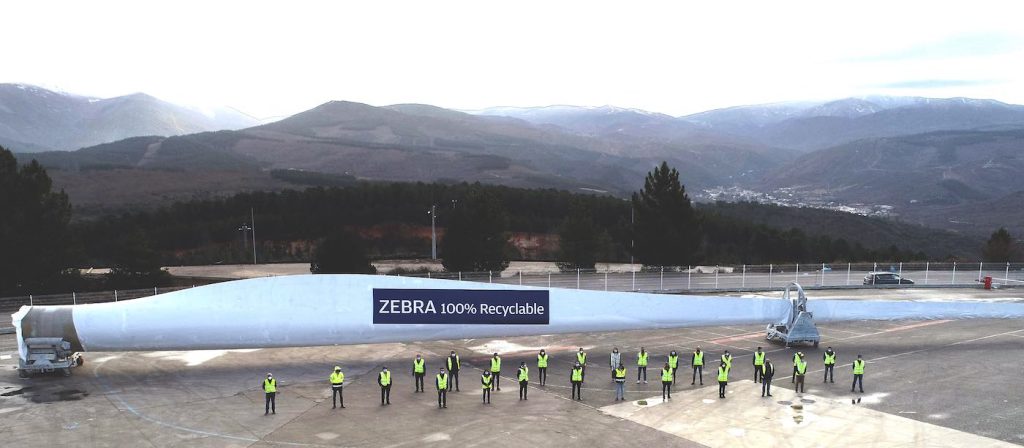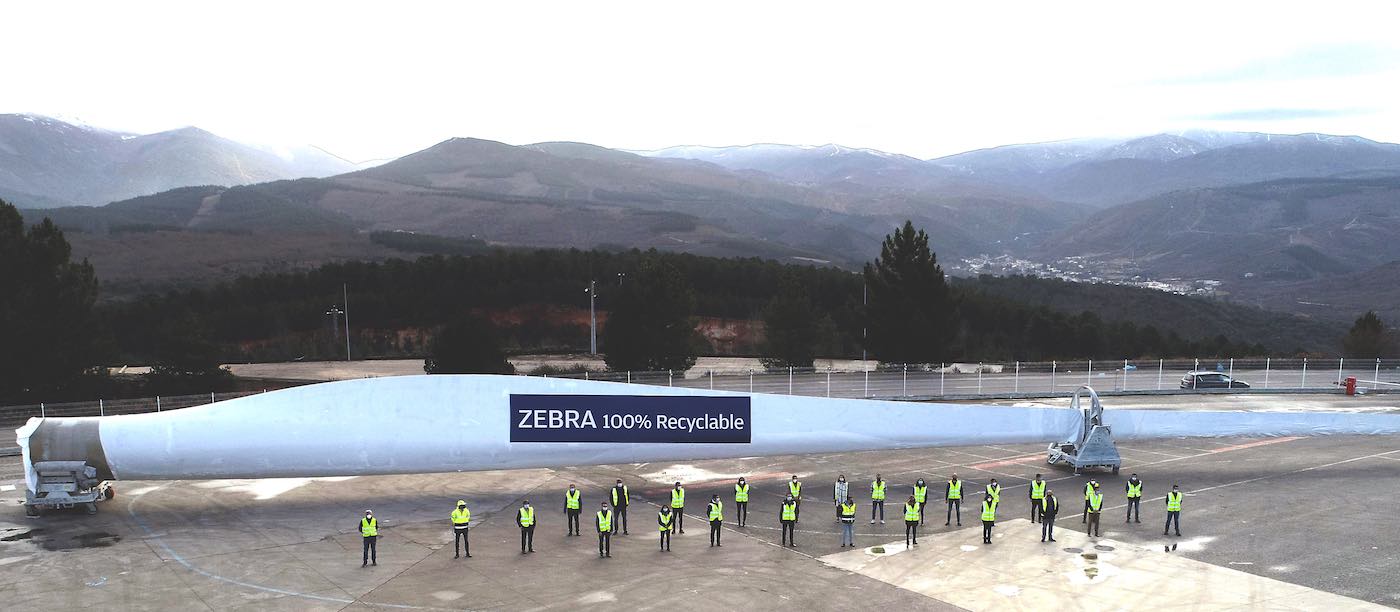
The production of the first prototype 100% recyclable wind turbine blade has just been unveiled.
The 62m (203-foot) blade was made using Arkema’s Elium resin, which is a thermoplastic resin well known for its recyclable properties.
Launched in September 2020, the Zero wastE Blade ReseArch (ZEBRA) project is a unique partnership led by French research center IRT Jules Verne and brings together industrial companies including Arkema, CANOE, Engie, LM Wind Power, Owens Corning, and SUEZ. Its purpose is to demonstrate the technical, economic, and environmental relevance of thermoplastic wind turbine blades on a full scale, with an eco-design approach to facilitate recycling.
Within the project, LM Wind Power has designed and built the world’s largest thermoplastic blade at its Ponferrada plant in Spain. This milestone is achieved after a year of material development and testing backed by sub-component level process trials by the consortium partners.
The liquid thermoplastic resin is perfectly adapted for the manufacturing of large parts by resin infusion, combined with Owens Corning-high performance fabrics. The resulting composite material is delivering similar performances to thermoset resins but with a key unique benefit: recyclability.
MORE: Amazon Joins the U.S. Department of Energy and MIT to Tackle Plastic Waste With New Science
Elium-based composite components can be recycled using an advanced method called chemical recycling that enables to fully depolymerize the resin, separate the fiber from the resin, and recover a new virgin resin and High Modulus Glass ready to be reused, closing the loop.
This method, developed by Arkema and CANOE partners, are tested on all composite parts including waste generated from production. Owens Corning is also in charge of finding solutions for fiberglass recycling through remelting or reusing in various applications.
In addition to material testing and process trials, the companies have also made progress on developing and optimizing the manufacturing process by using automation, to reduce energy consumption and waste from production.
LM Wind Power will now start full-scale structural lifetime testing at its Test and Validation Centre in Denmark, to verify the performance of the composite material used in making the blade and its feasibility for future sustainable blade production. Once these tests are finished, the End Of Life recycling methods will also be validated.
RELATED: New Enzyme Discovery is Another Leap Towards Dissolving Plastic Waste With ‘Amazing Efficiency’
The next steps are the recycling of production waste, the dismantling and recycling of this first blade and the analysis of the test results. By the end of the project in 2023, the consortium will have met the challenge of bringing the wind energy sector into the circular economy loop in a sustainable manner, according to the principles of eco-design.
“The manufacture of this first blade is a great success for the entire consortium and for the wind industry in general,” Céline Largeau, Project Manager, at IRT Jules Verne, said. That’s good news indeed.
Source: General Electric
POWER UP the Good News and Share This Hopeful Win in Recycling…





















GREAT NEWS! Now, the Million dollar question – cost factors. It this product producable & installable at competitive pricing or is it going to need huge government “investment”? Then, is the recycling process inexpensive enough to make the recycled product cost effective? These 2 factors frequently are the wrench thrown in the works on systems like this working. Hopefully, we hear more exciting news about all this! Also, hopefully, these don’t have the noise issue that has been reported from other blades…